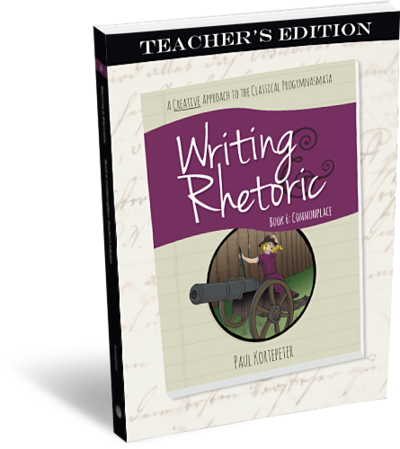Classical Academic Press
Ding & Dent: Writing & Rhetoric. Book 6: Commonplace
Ding & Dent: Writing & Rhetoric. Book 6: Commonplace
Couldn't load pickup availability
The Writing & Rhetoric series method employs fluent reading, careful listening, models for imitation, and progressive steps. It assumes that students learn best by reading excellent, whole-story examples of literature and by growing their skills through imitation. Each exercise is intended to impart a skill (or tool) that can be employed in all kinds of writing and speaking. The exercises are arranged from simple to more complex. What’s more, the exercises are cumulative, meaning that later exercises incorporate the skills acquired in preceding exercises. This series is a step-by-step apprenticeship in the art of writing and rhetoric.
A one-semester course for grades 5 or 6 and up Think of the progymnasmata as a step-by-step apprenticeship in the art of writing and rhetoric. In the award-winning Writing & Rhetoric series, author Paul Kortepeter has recovered this proven method of teaching writing in conjunction with critical thinking and speaking. Writing & Rhetoric: Commonplace (Student Edition) provides students with forms and models of excellent writing that they will imitate as they progress down the path to masterful writing.
This is the sixth in a series of 12 books that will train students over 6 years.
Full program includes:
Writing & Rhetoric Book 6: Commonplace (consumable student edition) continues the development of the art of persuasive writing and oration. Students will learn to create six-paragraph essays that are arguments against the common vices of people and arguments in favour of common virtues. For example, cowardice and boasting are criticized while courage and humility are commended. In addition to practicing skills they learned in earlier books, students will learn to:
- Write six-paragraph essays
- Support a thesis statement
- Argue against certain vices
- Argue for certain virtues
- Use comparison and contrast
- Introduce and conclude an essay
- Use a rhetorical device known as “the contrary”
- Invent soliloquies to support an argument
- Deliver writing orally
- Revise writing
Share





